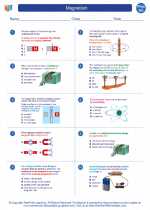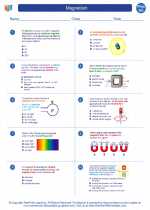Geological Time Scale
The geological time scale is a system of chronological dating that relates geological strata to time. It is used by geologists, paleontologists, and other Earth scientists to describe the timing and relationships between events in Earth's history.
Overview of the Geological Time Scale
The geological time scale is divided into several units, including eons, eras, periods, epochs, and ages. These units are based on significant geological and biological events, such as mass extinctions, the appearance of major groups of organisms, and changes in Earth's climate and geology.
Main Divisions of the Geological Time Scale
The geological time scale is divided into four main eons: the Hadean, Archean, Proterozoic, and Phanerozoic. The Phanerozoic eon is further divided into three eras: the Paleozoic, Mesozoic, and Cenozoic. Each era is divided into periods, and each period is divided into epochs.
Key Events and Features
- Formation of Earth (Hadean eon)
- Development of life (Archean and Proterozoic eons)
- Appearance of complex life forms (Phanerozoic eon)
- Mass extinctions (e.g., the Permian-Triassic and Cretaceous-Paleogene extinctions)
- Geological events (e.g., the formation of major mountain ranges, the opening and closing of ocean basins)
Study Guide
To understand the geological time scale, students should focus on the following key concepts:
- Memorize the main divisions of the geological time scale, including the eons, eras, periods, and epochs.
- Learn about the major events and developments that occurred during each division of the time scale.
- Understand the methods used to date geological strata and determine the relative and absolute ages of rocks and fossils.
- Explore the relationship between geological events, biological evolution, and Earth's changing climate throughout its history.
Students can use visual aids, such as timelines and diagrams, to help them grasp the scale of geological time and the sequence of events that have shaped Earth over billions of years.
By mastering the geological time scale, students will develop a deeper understanding of the history of our planet and the processes that have influenced the development of life and the Earth's surface.



